Fine Art America How to Change Medium of All Photographs
What Is Fine art Photography?
The phrase "fine fine art photography" is one of the few places where we can still run into the word "fine" in its original definition. "Of loftier quality" is a good description of this genre, just fine photography is much more than just "really proficient" photography. What makes a photograph worthy of a gallery or museum spot, collector prices, publication in a monograph, or limited edition print runs is difficult to define. Most people could notice the departure betwixt an Ansel Adams and a snapshot from a friend's holiday, but would have trouble formulating an explanation. Having an agreement of the nuanced conceptual differences between fine fine art and other types of photography is important, all the same. It can help 1 better appreciate the photo works of the greats and exist a boon for the creative efforts of photographers themselves.

Transform your space with Aaron Reed'south express edition photography print, The Empire, from his Iceland Nature Photography drove. Order yours today! Fine Art Express Edition of 50.
A Cursory History of Fine Art Photography
Photography is 1 of the youngest artforms, having emerged as tardily as the 1830s in France. Early on photographers used the new medium for a multifariousness of applications from hired portraiture to documenting wars. Those who wanted to utilize photography in a more creative mode, however, came up against the established art earth who looked down upon the quickness and skill-similar qualities of the process. Many photographers were pressured to emulate painting through move blur, lens filters, and bogus color to convince the art world of their piece of work's value.
It was not until people like Alfred Stieglitz and Ansel Adams' f64 group that photography began to come up into its own. Avant-garde compositional and darkroom techniques were developed, building up a unique set of tools and methods which set photography apart every bit an artform in and of itself.
Through the center of the 20th century, others like Man Ray, Eliot Porter, and Robert Eggleston pushed the stylistic boundaries of the medium, finally developing it into a total-fledged fellow member of the artistic community.
Today, anybody has admission to a camera in their pocket, and finding the line between art photography and everyday snapshots can be difficult. Broadly speaking, we can say that the fine art photographs of people like Adams, Stieglitz, Porter, and others stand apart for iii major reasons: conception, limerick, and presentation.
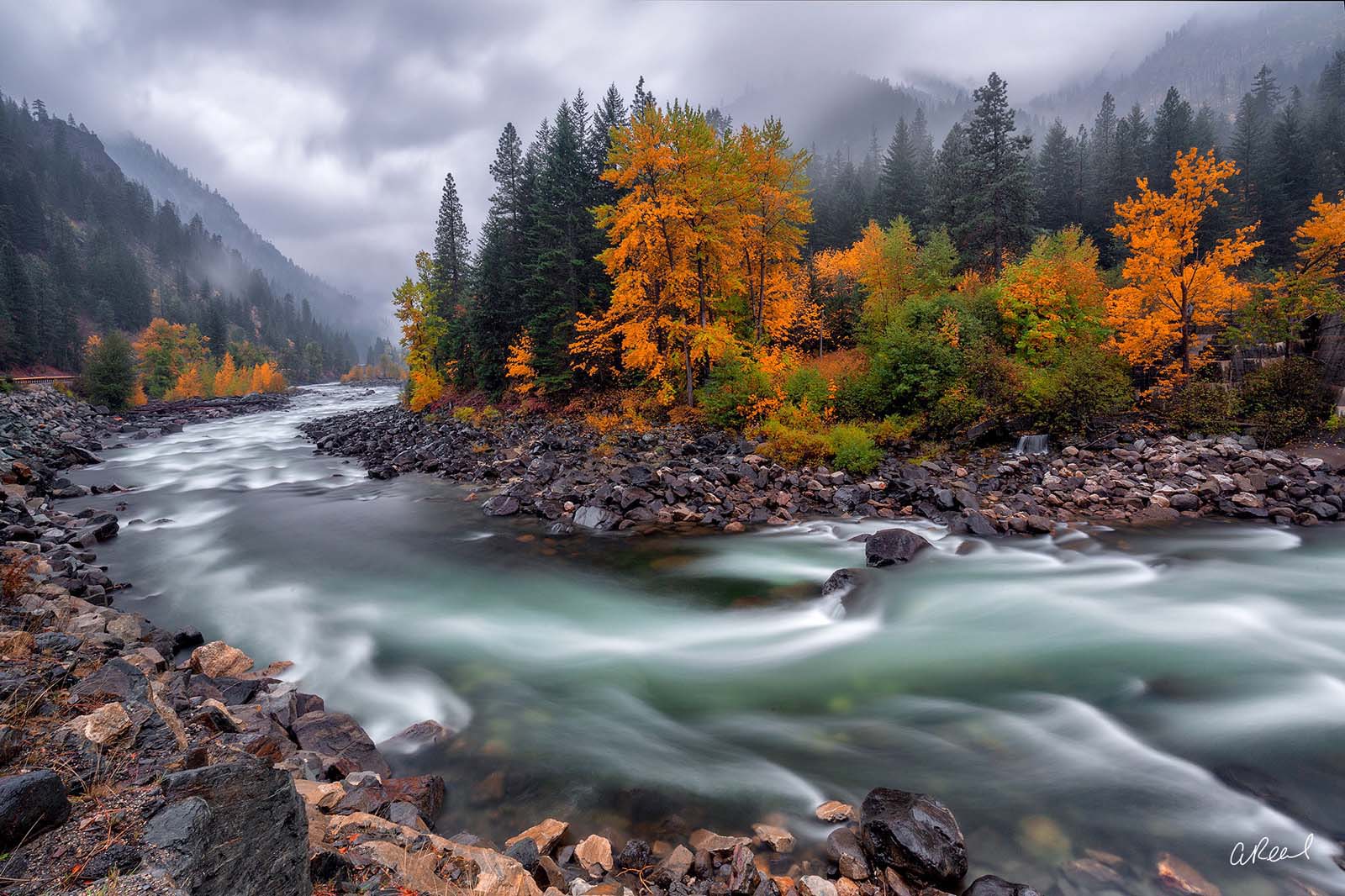
Adorn your walls with Aaron Reed's limited edition photography print, The Wash, from his Oceans & Rivers Luxury Art collection. Order yours today! Fine Art Express Edition of l.
Conception
Fine art photography begins with an idea; an artist has some concept, feeling, or bulletin which they want to convey through the medium of photography. This premeditation renders this kind of photography singled-out from things like snapshots and photojournalism, where the aim is to capture a scene in the moment for the sake of truth and posterity.
Whereas documentary photography treats the medium every bit an archival tool, fine art photography sees it as a creative one. While a journalist sees an eye-communicable scene and snatches it up, the art photographer has an idea and seeks out the bodies, objects, and spaces in the world which can bring it to life. Like the painter or the musician, the photographer is constantly brainstorming new compositions—there is a constant drive for expression and a search for the proper materials to bring the internal globe into the external one.
The creative ideas behind a fine art photo can vary widely. They can be very specific, like in Sally Isle of man'southward collodion plates of the American South—meant to capture the defeat and devastation felt by Civil War veterans upon their render domicile from the battlefield. They tin be vague and emotion-based like Galen Rowell'due south portraits of mountain alpenglow—instilling a sense of ineffable wonder and mystery. Or they can be more complex, difficult to parse apart and define strictly. Abstract photography like that of Brett Weston or Harry Callahan could be placed in this category, where forms are distorted and concealer, and interpretation is left entirely up to the viewer. Even if the precipitating idea of a photograph is hidden and opaque, nebulous emotions, design searching, and a creative impulse are notwithstanding at the heart of these more impenetrable works, and forethought is required for their inception.
Ideas are at the center of fine fine art photography and must be carefully separated from motives. Everyone has a motive for taking a photograph, but information technology takes a touch of vision to create a photograph as a work of fine art.
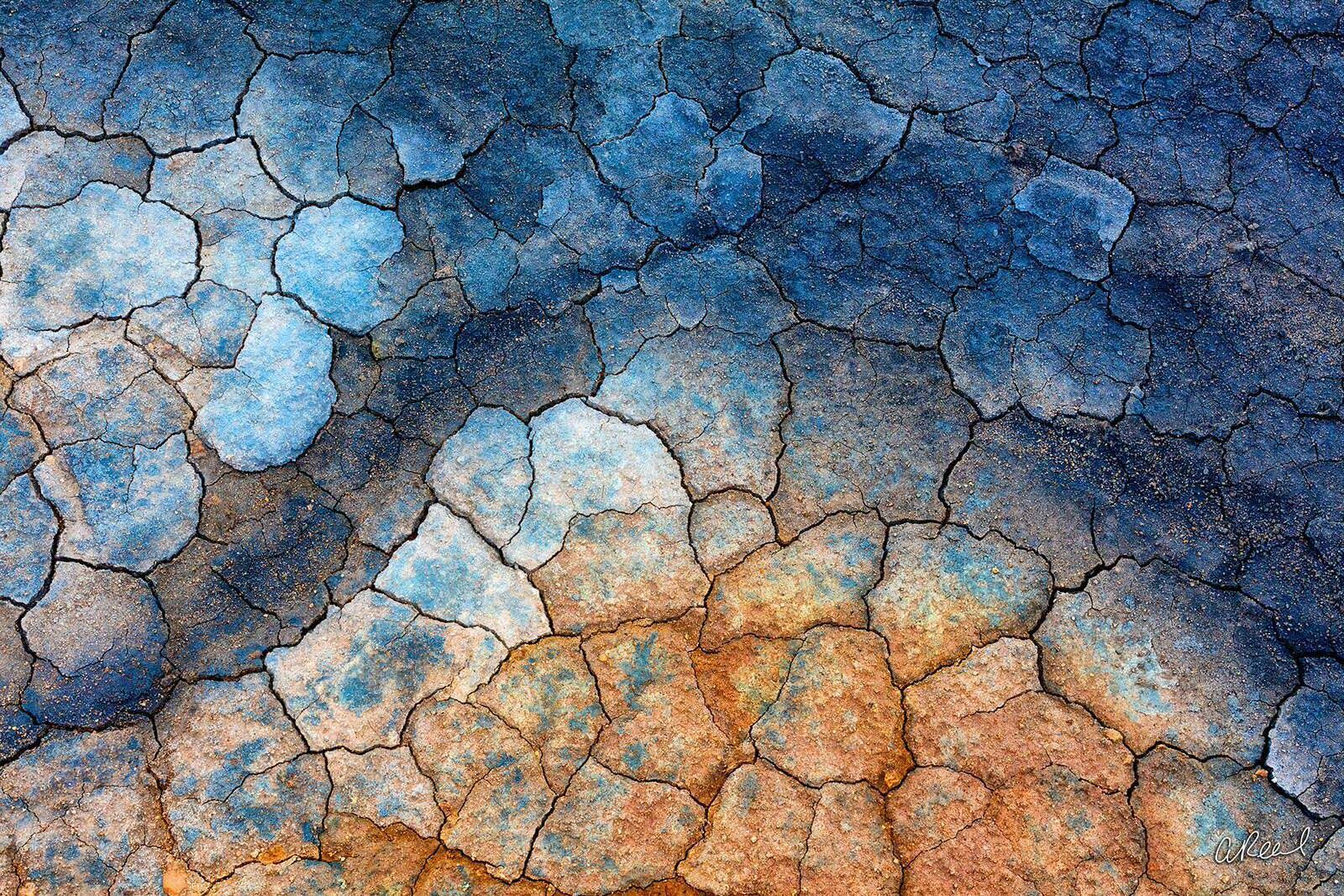
Transform your infinite with Aaron Reed's limited edition photography print, Dragonskin, from his Abstract Nature Photography collection. Order yours today! Fine Fine art Limited Edition of 100.
Composition
Equally fine art photography requires a conceptual framework, it besides demands some sort of methodology to inform the bodily process of cosmos. Photographers work with the world effectually them, and figuring out how to order (or disorder) that world and the objects within it is some other cornerstone of the fine art process.
An art lensman must first decide what kinds of scenery and subjects best convey or embody the idea or feeling they accept in mind. Different meanings are better conveyed with different styles such every bit portraiture, notwithstanding life, abstract, and mural. Photographers may switch between these styles from piece to piece, but many will focus on 1 for the bulk of their careers.
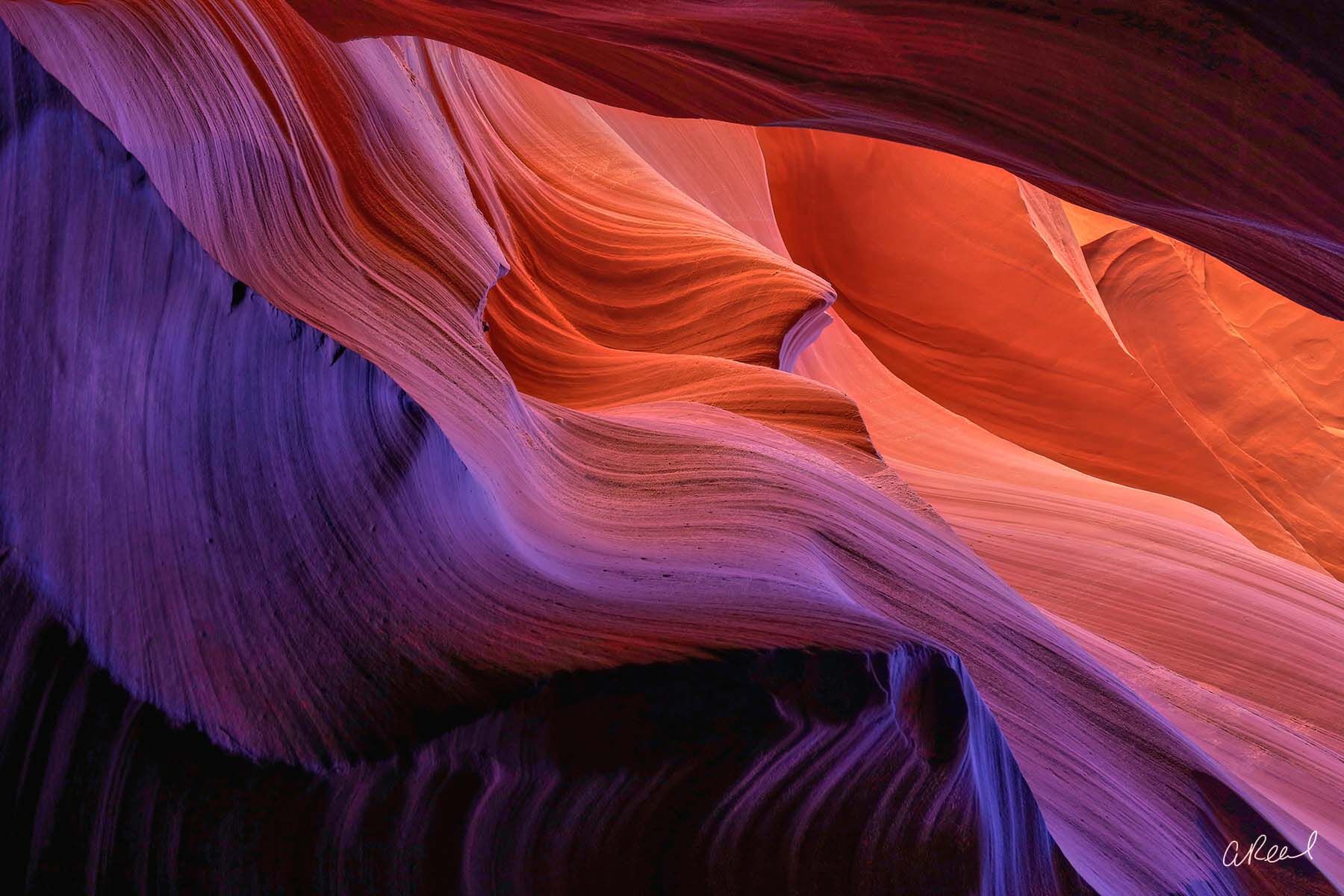
Elevate your dwelling house with Aaron Reed's limited edition photography impress, Silken Stone, from his American Southwest Photography collection. Order yours today! Fine Fine art Express Edition of l.
Portrait Photography
For portrait photographers, the creative person must choose the right model with the proper wearing apparel and attitude. They must select a suitable backdrop and a lens which provides the desired field of view. Lighting must be set to capture the correct mood and the field of study must be posed to capture the perfect residual between motion and stillness
Nevertheless Life Photography
For still life photographers, various mutual and unique objects must be carefully selected. They must exist placed relative to each other with respect to full general geometric rules or in some sort of random order with visual appeal. Lighting and setting must provide a properties which either complements the arrangement or is inconspicuous enough not to distract from it.
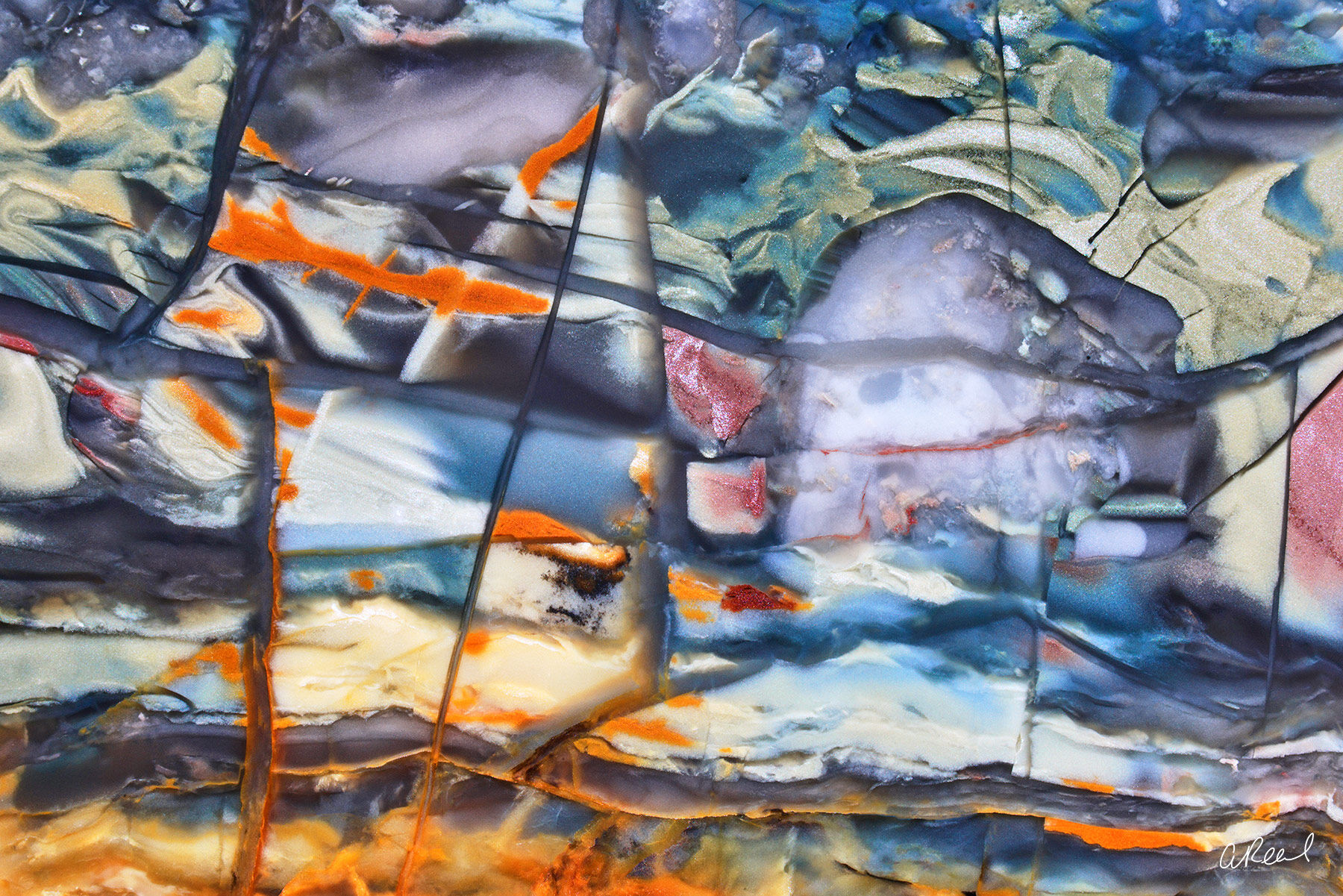
Elevate your home with Aaron Reed'south limited edition photography print, The Beauty of Jasper, from his Eternity Photography collection. Lodge yours today! Fine Fine art Limited Edition of 25.
Landscape Photography
Considering they are less able to control their subject matter, mural photographers must have a loftier level of dedication and a sixth sense for things like atmospheric condition patterns, topography, light, and the seasons. They must be in the right place at the correct time in the platonic conditions. This may mean hiking for miles, waking before dawn, and waiting several hours for the perfect shot.
Abstract photographers may take into consideration all or none of the factors mentioned above. Creating an abstract fine fine art photograph may mean clever organization of household objects, lighting a model in harsh or unusual ways, or seeking out unusual geological or meteorological phenomena in the wild. Ever, the abstract photographer must be on the lookout man for patterns and chaotic dynamics which speak to them and exemplify their particular creative vision.
Other photographers working in other styles must each face their own unique challenges in bringing class to their artistic conceptions. It is the deep idea which goes into these reifications which marker off fine art photography every bit unique.
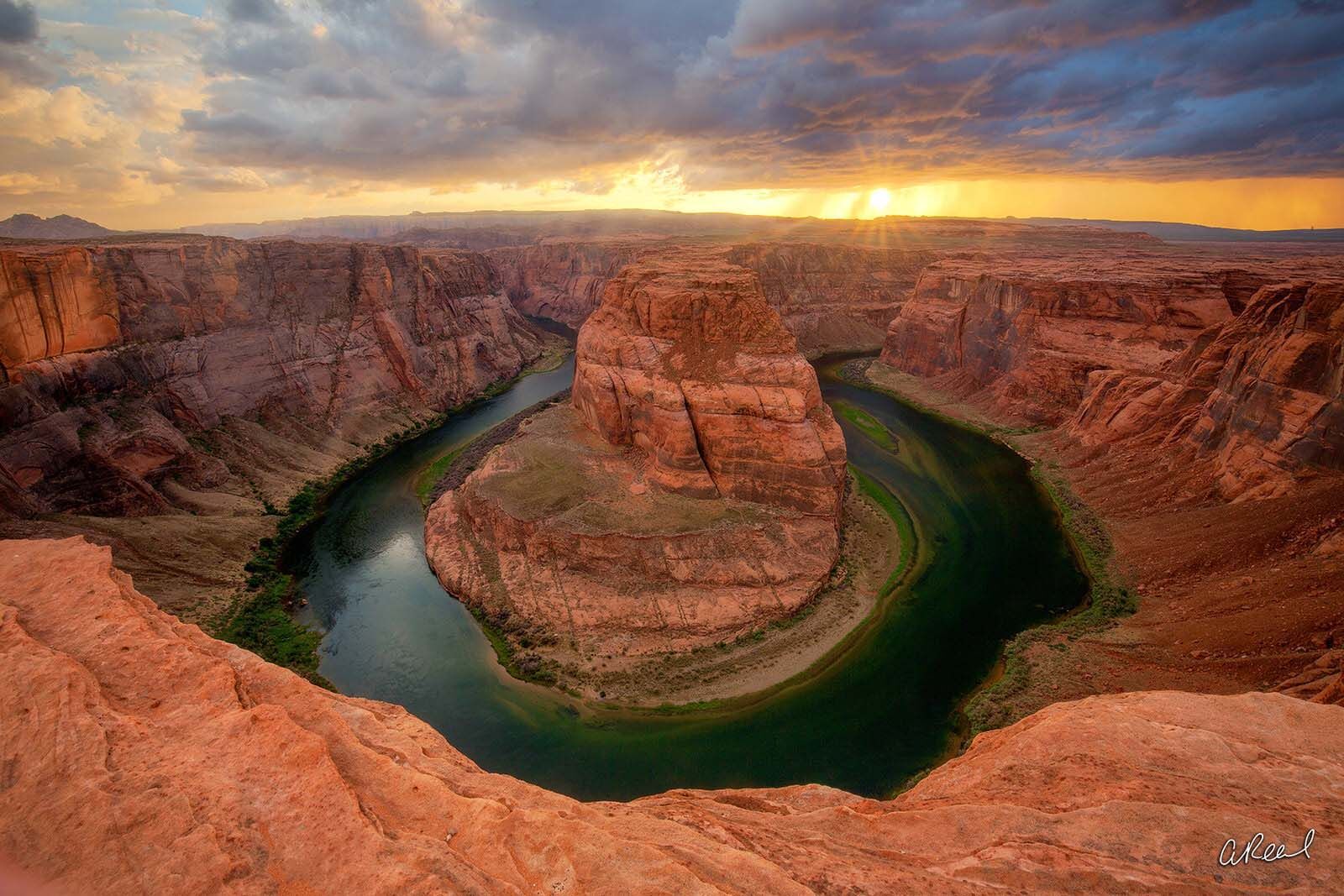
Elevate your home with Aaron Reed'south limited edition photography print, The Storm, from his Newest Work Photography drove. Order yours today! Fine Fine art Limited Edition of l.
Presentation
Photography is unique in that an image can be edited afterward it is created—colors can exist tweaked, contrast increased or decreased, size and shape inverse, and detail added and removed. This last stage of artistic input allows for a caste of precision and finishing which distinguishes art photography from other uses of the medium.
In the past, photo editing took identify in the darkroom. Negatives could be developed in a variety of different ways by changing the chemicals used, the development time, and the temperature of the h2o. This could affect grain size, color representation, contrast, and more. Once a negative was created, its paradigm was projected onto photographic paper to create a print. Dodging and called-for and different filters could then be used to alter contrast further and brighten and darken dissimilar parts of the image. The resulting print might not look like the scene in real life, but could ameliorate express the creative vision of the photographer.
Today, these same alterations are done in photo editing programs like Adobe Photoshop. Though the stop goal is still the aforementioned, the number of tools at the artist's disposal is much greater. Advanced technology means images can now exist layered, duplicated, squeezed and stretched, and resized, providing many new possibilities for the medium. Gimmicky photographers like Jeff Wall and John Goto take used these techniques to create fascinating new styles and compositional methods in an increasingly digital world.
As with the initial composition, the terminal editing and presentation process requires a level of foresight and creative vision which sets fine art photography apart. What is done in-camera is really merely half the story, and it takes just as much skill in an editing programme to create a truly great photo.
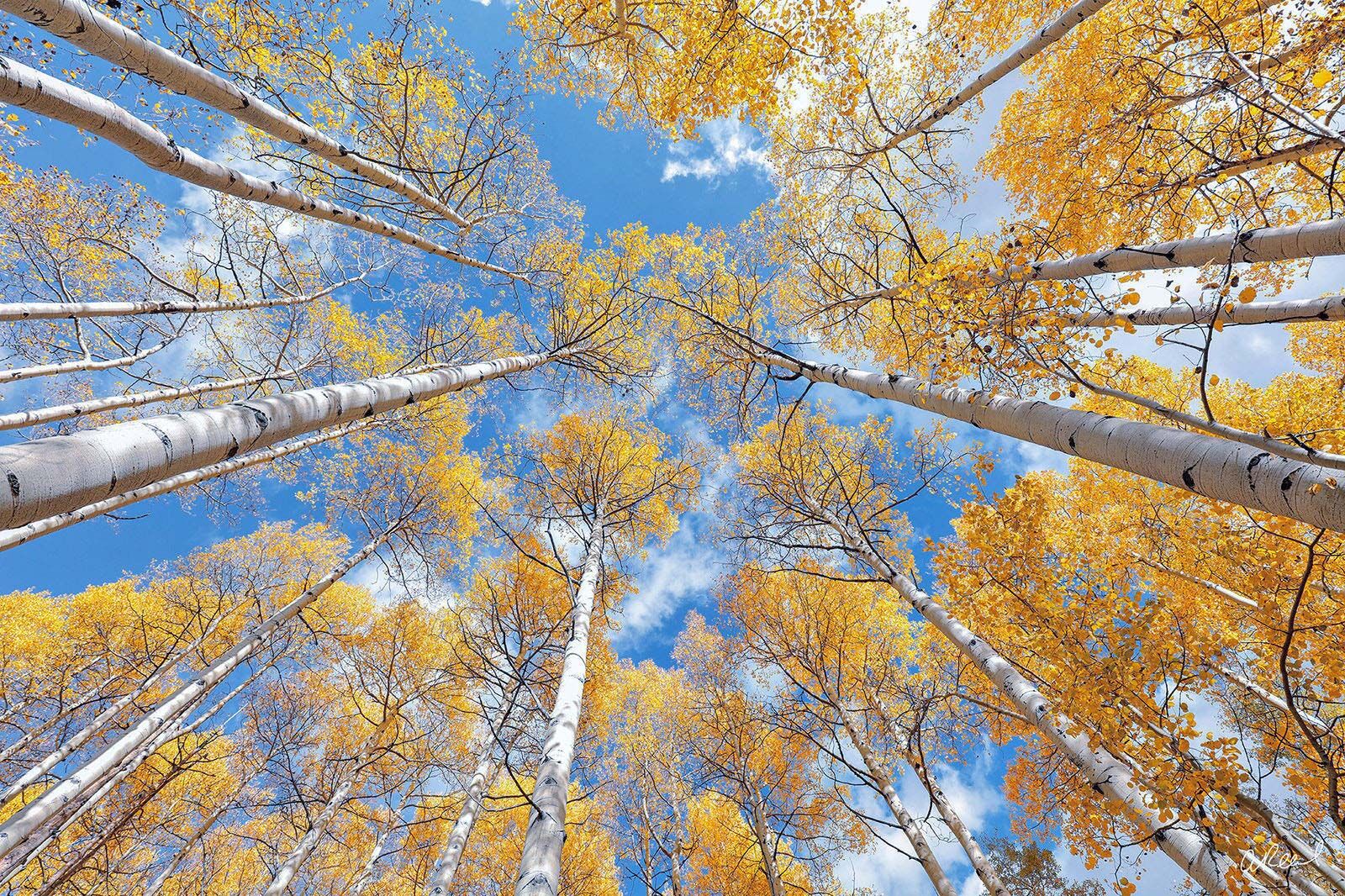
A vertical await into the awning of a small aspen grove almost Leavenworth, Washington. Fine Art Limited Edition of 50.
A "Fine" Line
These criteria are at the core of what distinguishes fine art photography from the rest of the photographic landscape. Yet, every bit is to exist expected in the art earth, these rules are never stock-still and easily cleaved.
Ideas about the creation of a photograph are held by everyone. We all accept a concept about how fifty-fifty the most mundane photo should turn out, whether it exist a friend'south birthday or a sleeping pet. Photojournalists travel to the cities and countries they document with a wealth of preconceptions and understandings gained at abode and abroad. Compositionally, we all want our photographs to plough out nicely and pay attention to the angle of the camera, the brightness of a scene, and the expressions on people's faces. Influencers, marketers, and merely about everyone else has played effectually with photograph filters and the editing options built into our smartphone cameras. To a greater or bottom extent, we all engage with the ideas stated above, but we are not all art photographers.
This paradox is exemplified by the work of Henri Cartier-Bresson, known for some of the nearly eye-communicable photographs of the 20th century. Bresson was a street photographer, and most of his shots were taken off the cuff with footling forethought or planning. However, his images bear witness an attention to detail and compositional precision still unmatched today. Bresson was also well travelled, and much of his work documents his life and experiences in Communist china, Mexico, the Middle East, and elsewhere. He besides did little work in the darkroom, content to take interns and printing companies handle about of the final editing work.
Despite deviating from many of the practices and virtues of art photography, Bresson'due south status as fine fine art photographer goes unquestioned. Photography cannot, then, be defined according to a checklist. To determine the value of a photograph, one must accept into consideration the creative processes which went into it but also admit the graphic symbol and impact of the concluding prototype. Like painting, sculpting, and musical limerick, fine art photography is meant to be art, and while looking at concept, composition, and presentation cannot provide the authority to declare a photograph fine or non fine, it can drive u.s.a. to see the stories and the hard work which set some works apart from and in a higher place the residual.
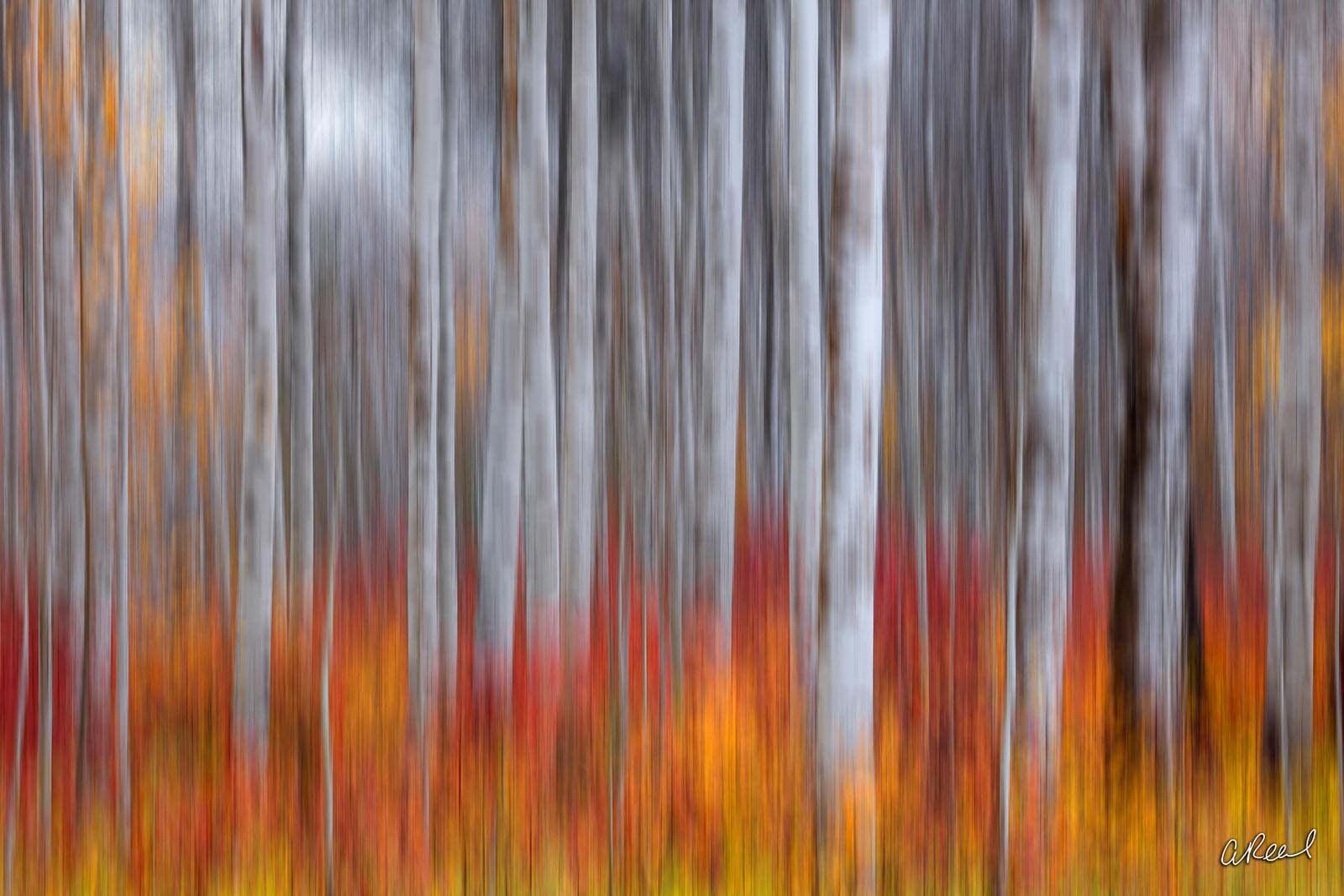
Transform your infinite with Aaron Reed's limited edition photography print, Brushed, from his Abstruse Nature Photography collection. Social club yours today! Fine Art Limited Edition of fifty.
Source: https://www.aaronreedphotography.com/gallery/what-is-fine-art-photography/
Post a Comment for "Fine Art America How to Change Medium of All Photographs"